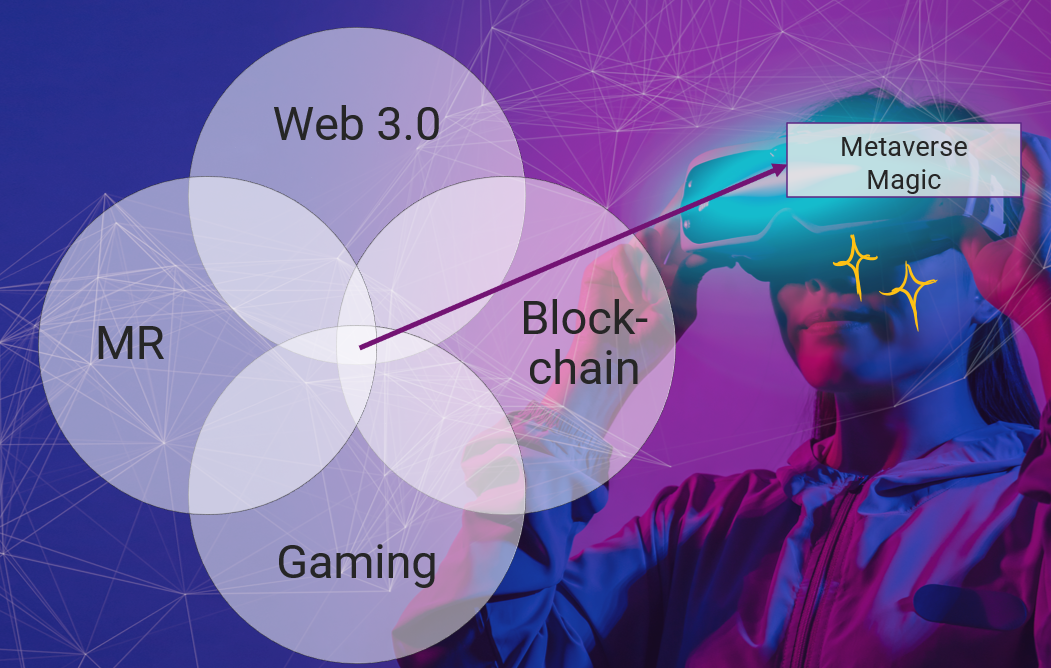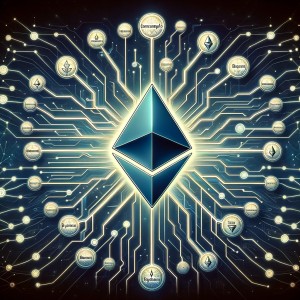With the advent of Web 3.0, the rise of Web3 cryptocurrencies is inevitable. Direct investment in blockchain protocols, through their crypto, is the right place to start participating in the growth of Web 3.0. However, Web3 has a dubious reputation; some critics brand it as an extension of blockchain-based trends that are “overhyped” and “harmful.”
This guide will help you evaluate top Web3 cryptocurrencies and possibly, encourage you to support the growth of Web3 by including some of these coins in your portfolio.
Also Read:
• Web3 Wallets: Why You Might Need One
• Web3 Startups: An Avalanche Of Funding?
What is Web 3.0?
Web 1.0 covers a period roughly between 1991 and 2004 when internet users were mainly consumers and not content creators. The second phase – Web 2.0 – began in 2004 when users started creating and uploading content online and started treating the web as a ‘platform’ for their content. We are still in the Web 2.0 era, and Web 3.0 is currently just a concept.
Gavin Wood—one of the co-founders of the Ethereum cryptocurrency— coined the term Web 3.0 in 2014. From that point on, the term evolved to cover anything associated with the next generation of a decentralized digital web infrastructure.
Web 3.0 is a rebrand of the Internet for websites and applications which focuses on using a machine-based understanding of data to provide a data-driven semantic web. Furthermore, Web 3.0 is the vision and the next generation of the future web.
Since Web 3.0 is meant to operate via decentralized protocols, which are the foundation blocks of crypto and blockchain technology, there will be a growing relationship between these three innovations.
Web3 pioneer, Gavin Wood, envisions a new economy built around blockchain where individuals can provide services directly to each other, where no single entity owns or controls the system, and where the ability to trade value items exists. Technologies like Big Data, machine learning, and decentralized ledgers will allow Web 3.0 to prosper.
Characteristics of Web 3.0
- In the Web 3.0 era, search engines, marketplaces, social media, etc., will be built on blockchain and facilitated by cryptocurrencies; thus, giving rise to more excellent development such as uncensorable content and more inclusive payment services.
- Ideally, Web 3.0 aims at allowing people to control their digital content through a decentralized framework, which will shift the dependency of transactions and permissions away from a central authority.
- Web 3.0 will benefit the creator economy, where users are rewarded financially when they bring digital data and offer value.
- Even though there have been early applications of Web 3.0, the era of Web 3.0 can only fulfill its potential when current and future web applications and websites embrace a decentralized web structure.
- All exchanges will be in crypto, making the process largely tamper-proof and transparent, at least partially.
- NFTs will have its role to play with users’ ownership in this universe where everything is expected to function in a metaverse.
Some companies like Reddit and Discord have already explored incorporating Web 3.0 tech on their platforms. Discord pulled back after facing heavy backlash from users.
Web 3.0 and layer one solutions
Web 3.0 needs to be powered by networks to take off. These networks need to offer scalability, security, and decentralization. Since Web 3.0 invites more user interactions and applications, scalability is vital in supporting the future of Web 3.0 apps and user operations.
The Scalability Trilemma
Scalability refers to the ability of a blockchain to accommodate rapid growth and demand that typically compromise performance. However, if Web 3.0 were based on a blockchain that is not scalable, we may experience slow-loading websites and poor user experiences in general.
Even though Web 3.0 is identical to decentralized, blockchain-inspired web architectures, these decentralized networks currently face a significant challenge known as the “Scalability Trilemma” that hinders widespread adoption. However, the “Scalability Trilemma” results from blockchain’s inability to manage the three core properties of security, scalability, and decentralization. Due to this, Layer 1 solutions have been introduced to resolve the trilemma.

Tackling scalability issues with Layer 1 solutions
Web 3.0 applications are often run on the Ethereum network, a Layer 1 blockchain. Such blockchains are also known as Layer 1 blockchain solutions which help to improve scalability for better adoption.
Besides Ethereum (ETH), Cardano (ADA), Binance Smart Chain (BSC), Litecoin (LTC), Polkadot (DOT), and Terra (LUNA) are some of the Layer 1 blockchain solutions that help tackle the “Scalability Trilemma.”
How different networks scale depends on the consensus mechanism, which includes Proof of Work (PoW) and Proof of Stake (PoS), Proof of Capacity (PoC), Proof of Activity (PoA), Proof of Burn (PoB), Proof of Elapsed Time (PoET), and Proof of History (PoH). For Web 3.0 to surpass its predecessors, it should use Layer 1 solutions.
Top 15 Web3 cryptocurrencies
As revealed earlier, Web3 tokens are decentralized projects that use smart contracts and automate transactions over the Internet. Here are the 15 top Web 3.0 cryptocurrencies.
Helium (HNT)
Helium, a cryptocurrency with a market cap of $2 million, is a decentralized blockchain network that powers the Internet of Things (IoT) devices. It uses a global network of low-energy wireless hotspots to broadcast data through radio waves recorded in the blockchain network.
However, the network uses a new algorithm known as the Proof-of-Coverage (PoC) consensus to validate that hotspots provide legitimate wireless coverage. Helium’s mainnet allows low-powered communication between different IoT devices and sends data across its vast network of nodes.
Polkadot (DOT)
Polkadot is one of the most popular cryptocurrencies in the crypto market, but most investors might not know it is a Web 3.0 project. This cryptocurrency currently has a market cap of $17.61 billion. However, its network is more scalable than Ether’s, and it ranks higher when it comes to charging lower fees and offering fast speeds.
Siacoin (SIA)
Sia is a blockchain technology that uses a P2P network to create a digital platform where users pay hosts to rent their storage space. However, transactions in the network are boosted through smart contracts. Furthermore, Siacoin, the native token of the blockchain network, acts as the payment medium for storing data on the web. Currently, Siacoin has a market cap of $448 million.
Chainlink (Link)
Chainlink is a decentralized network built on the Ethereum blockchain. However, this network helps create smart contacts based on real-world data. It integrates easily to any blockchain network, which is why it has become a widely used platform for oracle services. Chainlink currently has a market cap of $6 billion.
Filecoin (FIL)
Filecoin is also a decentralized network where users can earn the FIL token (the network’s native token) by renting the storage space in their hard drive space. Filecoin is a storage network, and anyone on the platform can be a storage provider. However, the more storage you have and provide on the Filecoin network, the more you earn in transaction fees and tokens. Filecoin has a market cap of $3 billion.
BitTorrent (BIT)
BitTorrent is the most potent P2P network globally, with over two billion users and 200 million wallets. It also touts itself as “the world’s biggest distribution network.” On BitTorrent, large files are divided and transmitted over the web in fragments, merging into one whole file on the recipient’s computer.
People who download the file from the network become part of the distribution. BitTorrent was created by the Tron network in 2018, and subsequently, the BitTorrent Token (BTT) on the Tron blockchain. BitTorrent has a market cap of $2.5 billion.
Kusama (KSM)
Kusama (KSM) is a Web3 cryptocurrency like Polkadot (DOT). However, its network was created to solve developers’ problems related to their projects. On Kusama, developers compete to get a spot on the Kusama network through parachain auctions. Kusama has a market cap of $1 billion.
Basic Attention Token (BAT)
Basic Attention Token is a native token of the Brave web browser built on the Ethereum blockchain network. The network aims to offer security and efficiency in digital advertising through blockchain technology. Its native currency was designed for petty exchanges among advertisers, users, and publishers.
Furthermore, BAT also tracks how users interact with digital advertising content. Again, it then stores that information in a distributed ledger. Today, there are more than a billion BAT tokens in circulation. Basic Attention Token has a market cap of $1 billion.
Flux (FLUX)
Flux was created to help developers develop web3 applications and deploy them on different networks. It is also used to create decentralized projects. The change also has a decentralized structure that allows users to access data on or off-chain. FLUX’s current market cap is $335 million.
Ocean Protocol (OCEAN)
The ocean is another type of Web3 cryptocurrency that offers all the tools you need to create Web3 solutions. However, this token is a good investment for people looking to invest in a Web3 currency with potential. The platform focuses on data sharing and decentralization, offering transparency when handling data. Lots of Web3 applications have been created through Ocean Protocol. The platform currently has a market cap of $663 million.
Livepeer (LPT)
Livepeer is a decentralized blockchain network that changes how video streaming works. It is built on the Ethereum network, and it provides inexpensive broadcast and streaming services directly at the Web 3.0 video stack layer. Livepeer aims to encourage network participants and distribute real-time videos.
Furthermore, the platform’s open-source nature allows developers and users to participate in its management and maintenance. The native token (LPT) will enable users to stake on the network to earn ETH and LPT as rewards. Livepeer’s current market cap is $491 million.
The Graph (GRT)
The Graph is a vital decentralized indexing system in the DeFi world that aims to bring a decentralized public infrastructure to the mainstream market. However, the network can be used to organize blockchain data.
Also, it is a low-level blockchain indexing protocol and a high-level cryptographic ledger. The Graph allows network users to build and publish an application programming interface (API), a workflow process that hides complex code behind a simple API. An API is a subgraph in the graph protocol which uses a specific query to get data from a blockchain. Furthermore, contributors on the blockchain use Graph tokens (GRT) to ensure the network’s security. GRT is a token that allows a community of stakeholders to provide curating services to the network. GRT’s market cap is $1.7 Billion.
Kadena (KDM)
Due to its braided chains, Kadena is a scalable Layer-1 blockchain protocol that processes up to 480,000 transactions per second (TPS). It is also a Proof-of-Work protocol but differs from other POW protocols because it offers smart contracts utilities similar to those in the Ethereum blockchain network. Kadena has a market cap of $1.1 Billion.
Zcash (ZEC)
Scientists from John Hopkins, MIT, and other eminent academic and scientific institutions developed Zcash. However, it is one of the first-privacy-built cryptocurrencies. Its token, ZEC, was initially built on Bitcoin codebase. Zcash has a market cap of $2.1 Billion.
Audius (AUDIO)
Audius is a decentralized music streaming platform for artists, fans, and node operators. Its token, AUDIO, can be used for staking, governance, and incentivizing artists’ earnings. Furthermore, Audius rewards its creators by featuring their music in weekly trending lists. Audius is currently in partnership with streaming platform TikTok and plans to introduce a stablecoin on its network to offer paid content in the future. Audius has a market cap of $432 million.
How to buy Web3 tokens
Buying Web3 tokens is easy. This article will adopt Binance as the exchange platform for these cryptocurrencies.
Step 1: Deposit fiat currency through an e-wallet transfer or bank transfer on Binance. Make sure you check the available fiat channels for desired cryptocurrencies.
You can also convert fiat currencies to BUSD or USDT so that you can trade a greater variety of tokens.
Step 2: Purchase any Web3 tokens through a wallet purchase or credit or debit cards.
Step 3: To use your Web3 tokens, you need to transfer the tokens from the Binance crypto address to a MetaMask wallet address.
Interoperability of Web 3.0 and the metaverse
In recent times, we have seen how blockchain technology, especially NFTs, can enable users to participate in the metaverse. Thanks to blockchain, these digital environments are scalable and interoperable.
Also, Web3 can offer the foundation for people to buy and sell virtual properties such as NFTs. Because Web3 is a collection of apps and user interactions on a decentralized platform, it is likely to be highly interoperable and facilitate trade and communication. Again Web3 is focused on hosting more open, interconnected websites for a better user experience.
Axie Infinity is a Web 3.0 app and is a complex gaming metaverse that bridges gaming and decentralized finance (DeFi). These games, which are NFT-based, require users to purchase an Axie avatar in the form of an NFT to start playing and use virtual currencies – Axie Infinity Shards (AXS) and Smooth Love Potion (SLP).
The metaverse happens at the intersection of Web3/Blockchain, MR, and gaming. If you don’t trust the way the Internet works nowadays and believe The Social Dilemma is right, consider an alternative: Web3. The Internet can empower ordinary people by breaking down existing power structures as the web comes full circle.
Final words
Web3 tokens offer immense potential to change the future of the Internet. Web3 is built on the concept of utility, decentralization, and openness. However, since these concepts are increasing daily, their popularity is likely to push Web3 tokens into the mainstream, thus, making them become profitable investments for the future. Direct investment in blockchain protocols through crypto is the right place to start participating in the growth of Web 3.0.
As adoption of these blockchains grows, via greater network usage, rise in decentralized apps (dApps), growth in decentralized finance (DeFi), and acceptance of Non-Fungible Tokens (NFTs), so too will the adoption of Web 3.0 and its technologies.
In addition to directly buying cryptocurrencies, you can check out DeFi projects like Pancake Swap or Bakery Swap. They are decentralized exchanges (DEXes) that facilitate token swapping. Additionally, through these DeFi projects, individuals can stake their crypto tokens in liquidity pools to earn even more coins in return for contributing to liquidity and active use of their funds.
Before you consider further action, always make the responsible decision and only invest money you can afford to lose.
FAQs about Web3 crypocurrencies
Does Web 3.0 already exist?
Web 3.0 has not yet been implemented, so there is no solid definition. It took over ten years to transition from the original web, Web 1.0, to Web 2.0. Hence, it is expected to take just as long, if not longer, to implement and reshape the web with Web 3.0 entirely.
Is Web3 really decentralized?
Web3 will provide decentralized access to corresponding data, unlike Web 2.0, which primarily stores data in centralized locations.
Does Web3 have a coin?
Web3 tokens will power decentralized apps (DApps). Web3 tokens are built on platforms like Ethereum but usually have unique platforms associated with each one.





